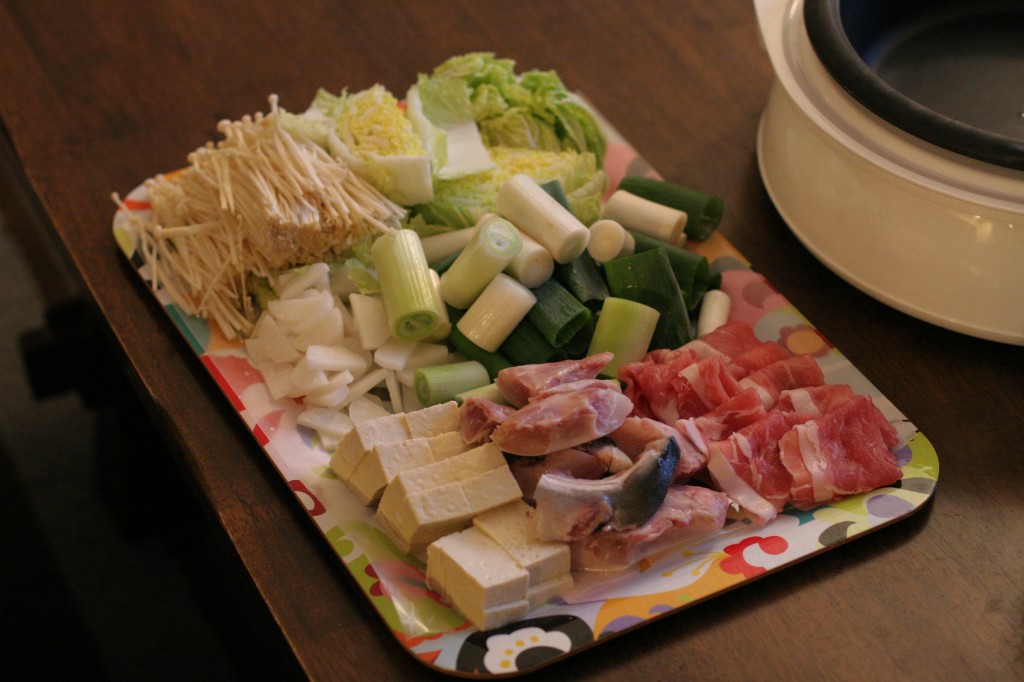In many Asian cultures, hot pot meals are very common. Generally speaking, these one-pot meals are a combination of some sort of broth or stock, a variety of vegetables and one or more kinds of protein. I know that’s about as generic of a description as you can get, but that’s kind of the point- there are no hard, fast rules about what the Japanese call nabe (pronounced “nah-bey”), which, translated literally, means “cooking pot.”
There are several different kinds of nabe in Japan, and one of the most popular is chankonabe- a protein rich hot pot made for sumo wrestlers so they can gain weight. The thing is- like most nabe, chankonabe is relatively healthy. In addition to several kinds of veggies, the protein could come from chicken (skin on), pork, tofu, chicken meatballs or seafood- it isn’t like a pot filled with bacon and pork belly! The idea is to pack in as much protein as possible, and sumo wrestlers often eat this with copious amounts of white rice and beer to really up the calorie count but still get their nutrients (not sure about the beer though!). This dish is one of the main items that the younger, newbie sumo trainees make for their older, more established rikishi (professional sumo wrestler, or, literally “strong man”) at the sumo stables where they live and train.
Now I’m pretty sure it goes without saying that I’d prefer not pack on ANY pounds, but as I mentioned before, chankonabe is a healthy dish, especially with a few, simple edits. I opted to skip the chicken altogether and picked up some nice pieces of buri (amberjack), thinly sliced pork and firm tofu to use as my protein sources. Napa cabbage, enoki mushrooms, daikon (Japanese radish) and long onions were also added, along with a chakonabe soup base that I picked up at the Japanese supermarket (it has miso paste and a few other ingredients).
Nabe is made at the table, usually in an electric hot pot (well these days, anyway!). You just plug the electric nabe in, add water, the soup base, then the larger protein sources first, the finally- the veggies. Wait until everything has cooked, then ladle some in your own bowl and eat. The best part is that after all of the protein and veggies have been picked out and only the soup remains, you can toss in some cooked rice or udon noddles, mix in a couple of eggs and you have another meal, perfect for cooler weather. Japanese believe that eating from one shared pot helps create camaraderie and warmth between the people who are partaking. So it’s good for the body AND for the soul!
Even if you don’t have an electric nabe at home, you can always make it on the stove, then set the pot in the middle of your dinner table. There’s really no recipe for nabe- just use a soup base, protein and vegetables of your choice. Enjoy!






